
Two designs from Cristobal Balenciaga, a decade apart. Left, his camel wool “Shar Pei” scarf coat, Autumn 1950. Right, a pale gray and navy blue plaid wool coat, 1961. / Photos courtesy the Museum at FIT.
By Nancy McKeon
BREATHE IN. Breathe out. Relax. There’s nothing rushed or anxiety-inducing about a fashion exhibit at FIT, the legendary Fashion Institute of Technology in New York. No timed tickets, no enormous crowds. The clamor of the Met’s Costume Institute finds no home here, in the self-proclaimed “most fashionable museum in New York City.”
Drawing from its own extensive collections, the museum just opened Dior and Balenciaga: The Kings of Couture and Their Legacies. Two of the biggest figures in 20th-century couture—what more is there to say? But that may not be the right question. What is there to look at? Where are the similarities and the contrasts?
The exhibit promises a more rigorous examination of the two men whose work largely set the styles for the post-World War II era.
Speaking of contrasts . . .
Christian Dior was an affable, but business-savvy, man from a wealthy French family, more illustrator than dressmaker. He “built” his garments with interior structuring (corsets, paniers, etc.) to emphasize what he saw as the ultimate female form: forthright bust, small waist and wide, swirling skirts. By the mid-1950s, about 55% of French couture exports was produced by his atelier.
Cristóbal Balenciaga, on the other hand, came from a modest family in a Basque fishing village, was apprenticed to a tailor at age 12, opened his own little boutique in Spain, eventually moving to Paris because of the Spanish Civil War. He was reclusive, rarely mingling in society. His clothes were created by draping and manipulating fabric on the body. Which he did brilliantly.
The difference in the two men’s techniques can be appreciated by the juxtaposition of two similar full-skirted evening gowns. The Balenciaga gown weighs 2.2 pounds, according to materials created by museum deputy director Patricia Mears, who curated the show, and her staff. By contrast, the Dior gown weighs in at almost 10 pounds.
Balenciaga rarely talked with the press, but the press—fashion writers and newspaper reporters—talked about him, as did the society women lucky enough to have him make one of his confections for them.
Christian Dior once said that Cristóbal Balenciaga was “the master of us all.” The haute couture was “like an orchestra whose conductor is Balenciaga,” he said. “We other couturiers are the musicians and we follow the direction he gives.”
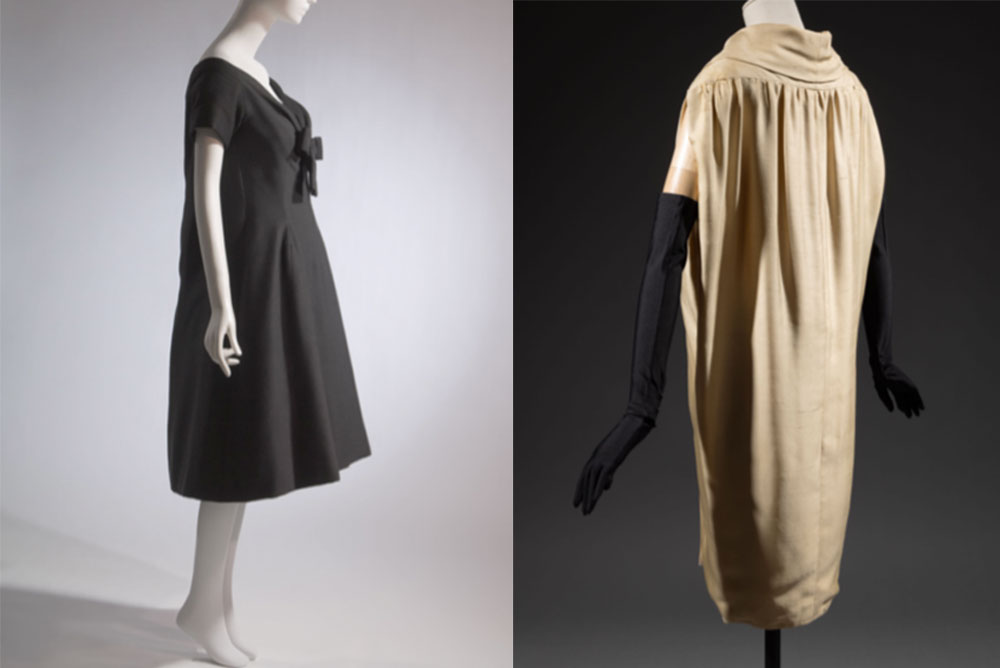
The House of Dior continued after the master’s sudden death after 10 years of wild success. Left: Designers who kept the name alive included a young Yves Saint Laurent, who made this charcoal wool dress for Dior. It’s from his 1958 “Trapeze” line.
Right: Ten years after the wasp waists of the New Look, Balenciaga bought forth a more relaxed silhouette, the “Sack Dress,” in Spring 1957 (also introduced by Givenchy that season). This example is sleeveless in tan slubbed silk. / Photos courtesy the Museum at FIT.

Left: The two day suits are, left, Balenciaga, in gray wool flannel, circa 1950, and right, Dior, in blue wool, 1952. One imagines that the bracelet-length sleeves accommodated the gloves then routinely worn by women. Right: This frothy cocktail dress is by Balenciaga, 1957. / Photos courtesy the Museum at FIT.
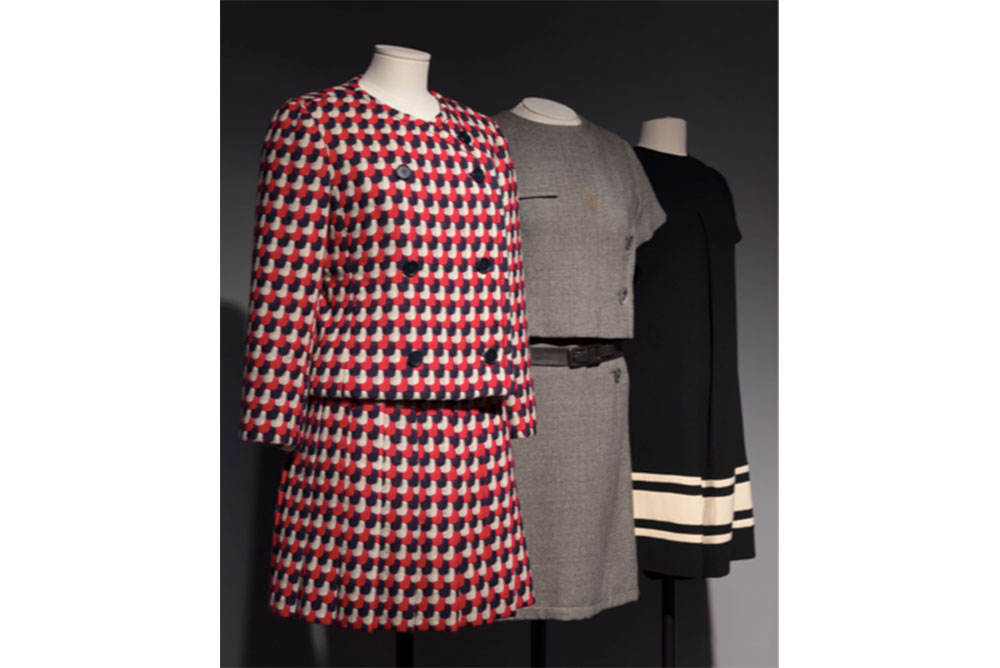
The House of Dior in the 1960s: Left to right, Gaston Berthelot (for Christian Dior New York) a red, white and blue wool tweed suit, circa 1965; Marc Bohan for Dior “Acacias” gray wool suit, 1961; also Marc Bohan for Dior, a black-and-white wool crepe culotte dress, 1967. / Photo courtesy the Museum at FIT.
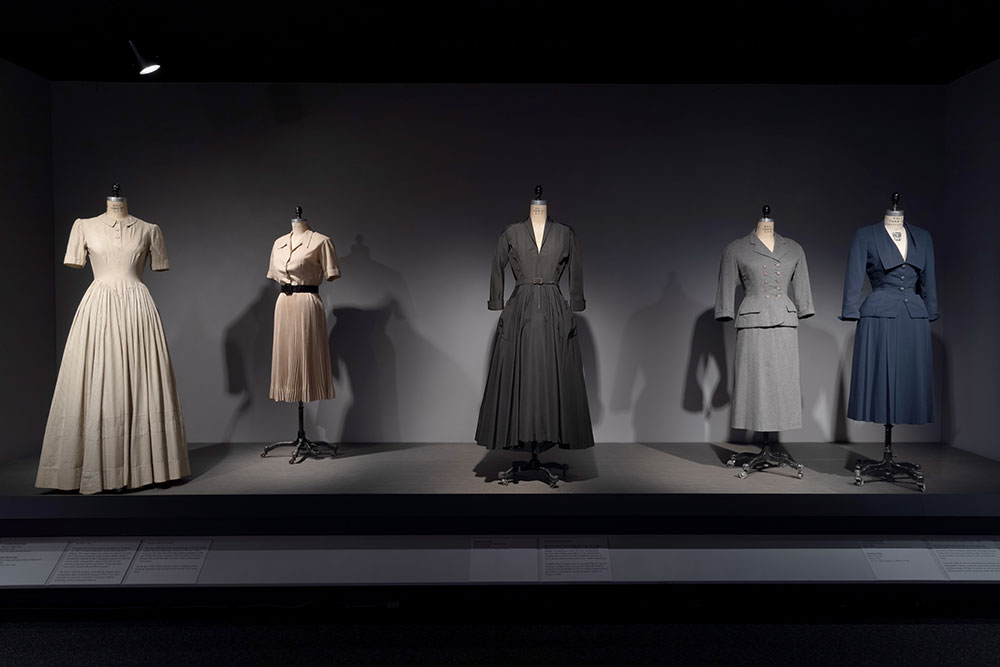
Left to right, a Balenciaga striped cotton dress, Summer 1938; a Balenciaga beige wool-crepe day dress with black leather belt, 1948; from Nettie Rosenstein, a New York dress designer who followed Dior closely, a black wool and silk faille dress, 1947; a Balenciaga gray wool-flannel suit, circa 1950; and a Dior blue wool suit, circa 1952. / Photo courtesy the Museum at FIT.
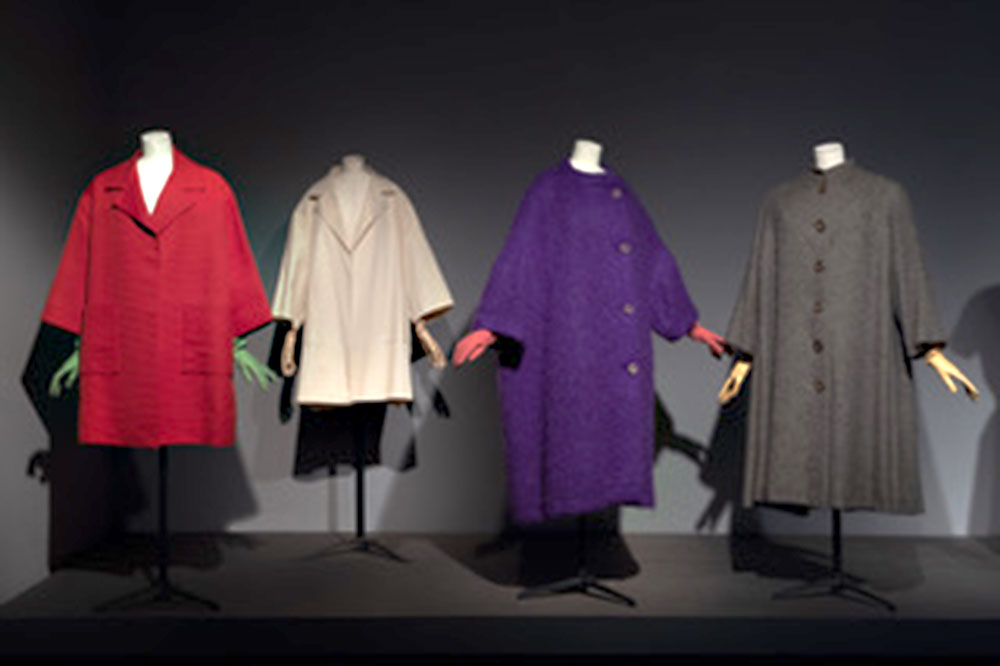
Left to right: Red ribbed-cotton coat by Balenciaga, circa 1958; a muslin toile of the coat, by Ellen Shanley, former curator of the Museum at FIT; a purple mohair coat by Balenciaga, circa 1960. From Christian Dior, 1952, a coat in olive wool boucle. / Photo courtesy the Museum at FIT.
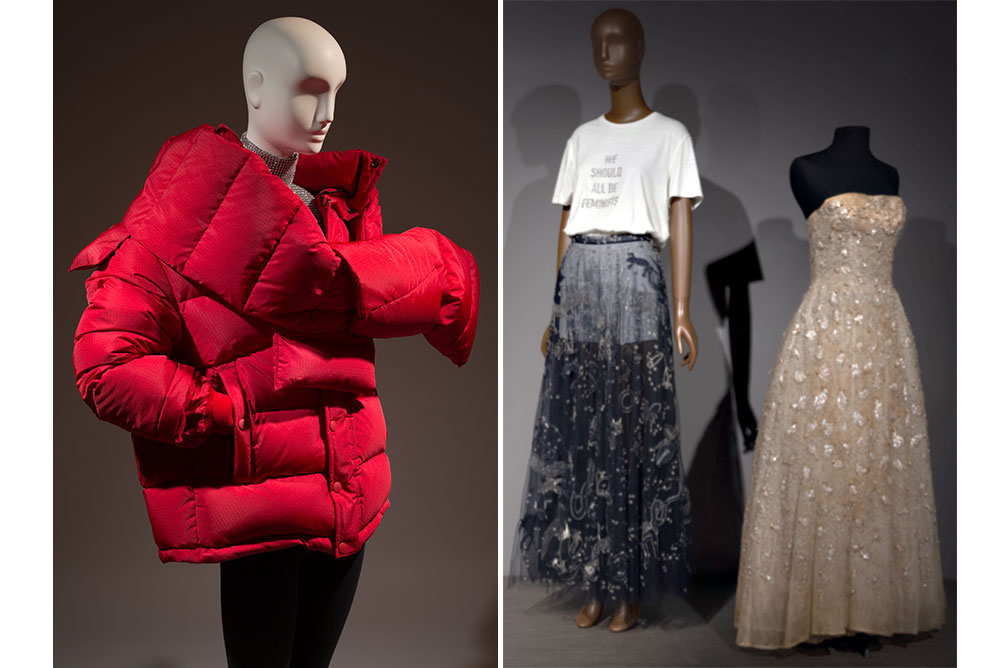
The new kids on the fashion block. Left: A 2016 puffer coat, hood and scarf from Balenciaga designer Demna Gvasalia.
Right: Dior’s current designer, Maria Grazia Chiuri, pairs a T-shirt with an embellished tulle skirt. It’s from Spring 2017. An embellished tulle evening gown by Christian Dior dates from Autumn 1957. / Photos courtesy the Museum at FIT.

Such an educated and descriptive analysis. Feels like I was there
Wow, thanks!
I love the background contrasting commentary about the designers, that places them in time and space and the social strata of their times. Your mention of Dior’s new kid on the block caught my eye, as well. Making fashion truly interesting is to occasionally make fashion relatable to everyone. Do you remember Sharon Stone’s arriving at the Oscars in a Gap t-shirt? She made fashion history that night by daring to be relatable…in a sea of swoon-worthy designer couture.
https://pagesix.com/2020/04/17/why-sharon-stone-wore-a-gap-t-shirt-to-the-1996-oscars/amp/
I didn’t remember that. Thanks for the link!